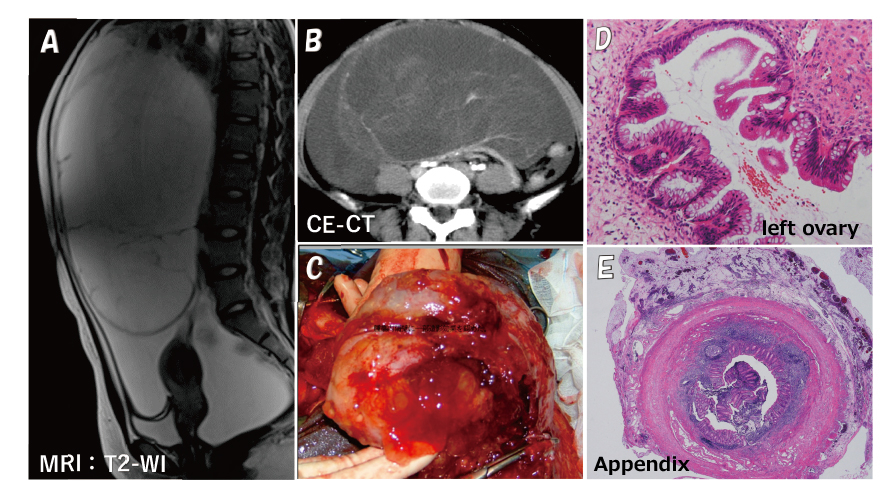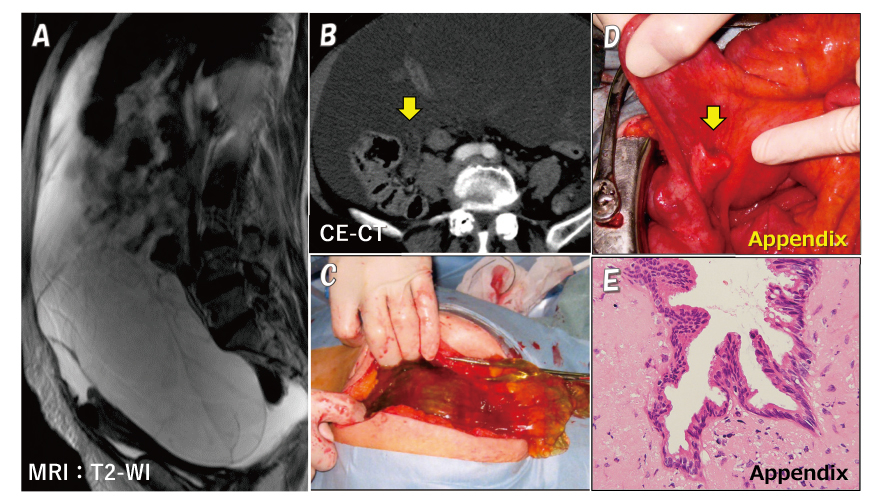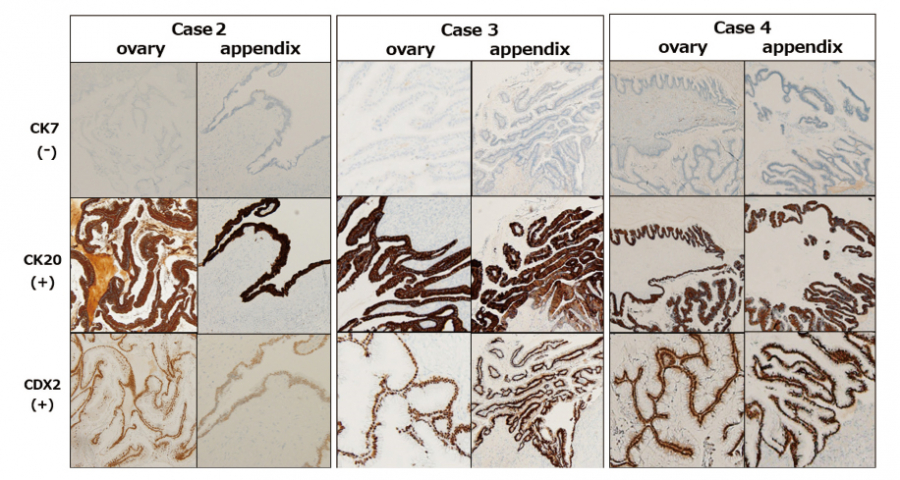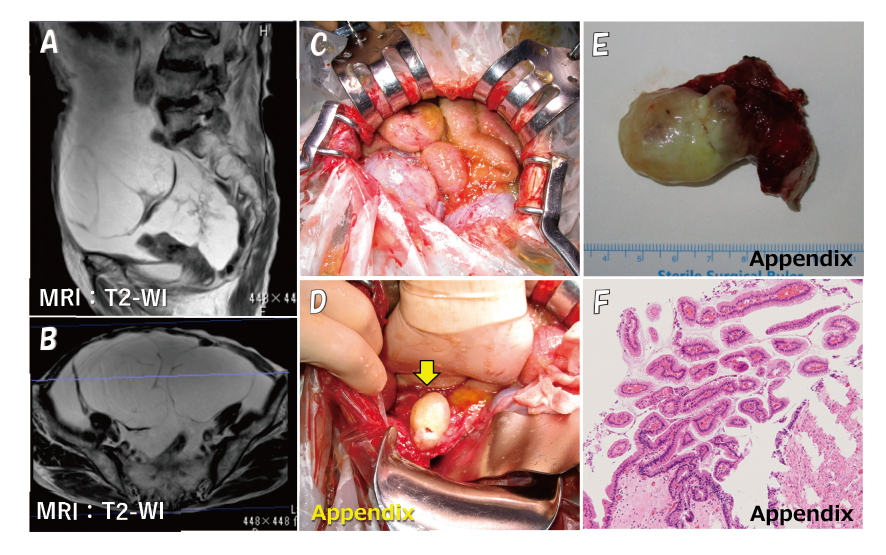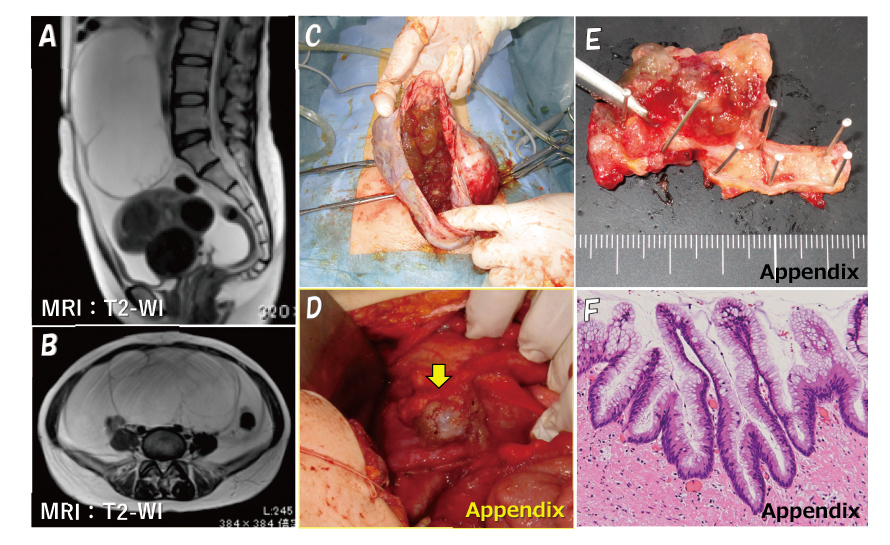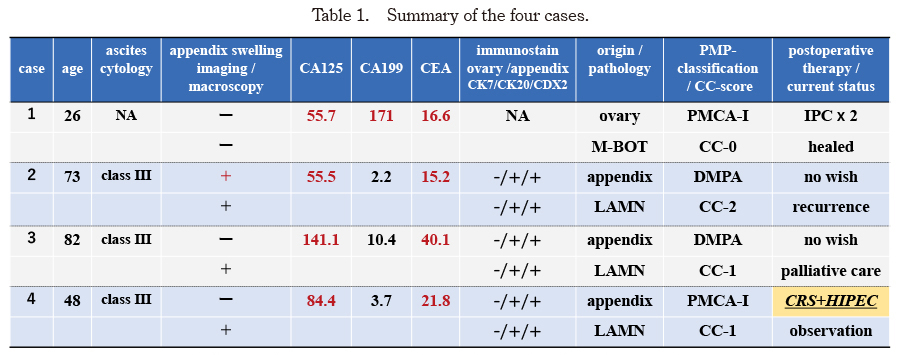1. Yonemura Y. Treatment system for pseudomyxoma peritonei. MHLW Grants-in-Aid for Scientific Research (Research on Intractable Diseases) Summary Report:Research on the frequency and pathogenesis of pseudomyxoma peritonei in Japan and the development of treatment methods (H24 - Refractory, etc. (intractable) - designated - 007) 2012 Summary and sub-report.http://pmp-jp.org/images/treat_system.pdf
2. Moran B, Cecil T, Chandrakumaran Ket al. The results of cytoreductive surgery and hyperthermic intraperitoneal chemotherapy in 1200 patients with peritoneal malignancy. Colorectal Dis,17:772-778, 2015.
3. Kato A, Yazawa H, Mastuida H. Two cases of pseudomyxoma peritonei with ovarian tumors originating from mucinous tumors of ovary and appendix. Fukushima Medical Journal,70;7-18, 2022.
4. Acs G, Serous and mucinous borderline (low malignant potential) tumor of the ovary. Am J Clin Patho,123:S13-S57, 2005.
5. Smeenk RM, Van Velthusysen MI, Verwaal VJ,et al. Appendiceal neoplasms and pseudomyxoma peritonei:a population based study. Eur J Surg Oncol,34:196-201, 2008.
6. McKenny JK, Soslow RA, Longacre TA. Ovarian mature teratoma with mucinous epithelial neoplasms:morphologic heterogenecity and association with pseudomyxoma peritonei, Am J Surg Pathol,32:645-655, 2008.
7. Ronett BM, Kajdacsy-Balla A, Gilks CBet al. Mucinous borderline ovarian tumor:points of general agreement and criteria, and behavior. Hum Pathol,35:949-960, 2004.
8. Bendix F, Reimer A, Gastinger I,et al. Primary appendiceal carcinoma. Epidemiology, surgeryand survival:results of a Germanmulti center study, Eur J Surg Oncol,36:763-77, 2010.
9. Lai CW, Yue CT, Chen JH. Mucinous cystadenocarcinoma of the appendix mimics acute appendicitis, Clin Gastroenterol Hepatol,11:e11, 2013
10. McGory M, Maggard M, KangH,et al. Malignancies of the appendix:beyond case series reports, Dis Colon Rectum,48:2264-2271, 2005.
11. Shaib WL, Goodman M, Chen Z,et al. Incidence and survival of appendiceal mucinous neoplasm. A SEER analysis, Am J Clin Oncol,40;569-573, 2015.
12. Nuta OA, Quinto AAM, Municio AM,et al. Mucinous appendiceal neoplasms, diagnosis and surgical treatment. Gir Esp,95:321-327, 2017.
13. Misdaraji J, Yantiss R, Graeme-Cook F,et al. Appendiceal mucinous neoplasm:controversial issues. Arch Pathol Lab Med,134:864-870, 2010.
14. Ronnett BM, Zahn CM, Kurman RJ,et al. Disseminated peritoneal adenomucinosis and peritoneal mucinous carcinomtosis. A clinicopathologic analysis of 109 cases with emphasis on distinguishing pathologic features, site of origin, prognosis, and relationship to “pseudomyxoma peritonei”. Am J Surg Pathol,19:1390-1408, 1995.
15. Ronnett BM, Yan H, Kurman RJ,et al. Patients with pseudomyxoma peritonei associated with disseminated peritoneal adenomucinosis have a significantly more favorable prognosis than patients with peritoneal mucinous carcinomatosis. Cancer,92:85-91, 2001.
16. Syed Ali Rizvi, Wajahat Syed, Ravi Shergill. Approach to pseudomyxoma peritonei. World J Gastrointest Surg,27;10:49-56, 2018.
17. Chirihan Ayadi, Amine Naggar, Hajar Andour,et al. Appendiceal mucocele with pseudomyxoma peritonei mimicking ovarian tumor with peritoneal carcinomatosis. Radiol Case Rep,17;3000-3004, 2022.
18. Vahan Kepenekian, Amaniel Kefleyesus, David Keskin,et al. Cancers,14;4434, 2022.
19. Chuaqui RF, Zhuang Z, Emmert-Buck MR,et al. Genetic analysis of synchronous mucinous tumors of the ovary and the appendix. Hum Pathol,27:165-171, 1996.
20. Lee KR, Scully RE. Mucinous tumors o the ovary;a clinicopathologic study of 196 borderline tumors ( of intestinal type) and carcinomas, including an evaluation of 11 cases with “pseudomyxona peritonei”. Am J Surg Pathol,24:1447-1464, 2000.
21. Guo AT, Song X, Wei LX,et al. Histological origin of pseudomyxoma peritonei in Chinese women; Clinicopathology and immunohistochemistry. World Gastroenterol,17:3531-3537, 2011.
22. Zhou F, Chen X, Li Y, Huang L. Two independent primary mucinous tumors involving the appendix and ovary accompanied with acellular pseudomyxoma peritonei. Int J Ciln Exp Pathol,8:11831-11834, 2015.
23. Baratti D, Kusamura S, Nonaka D,et al. Pseudomyxoma peritonei:Biological features are the dominant prognostic determinants after complete cytoreduction and hyperthermic intraperitoneal chemotherapy. Ann Surg,249:243-249, 2009.
24. Ronnet BM, Seidman JD. Mucinous tumor arising in ovarian mature cystic teratomas; relationship to the clinical syndrome of pseudomyxoma preitonei. Am J Surg Pathol,27:650-657, 2003.
25. McKenney JK, Soslow RA, Longacre TA. Ovarian mature teratomas with mucinous epithelial neoplasms:morphologic heterogeneity and association with pseudomyxoma peritonei. Am J Surg Pathol,32:645-655, 2008.
26. Stewart CJR, Tukamoto T, Cooke B,et al. Ovarian mucinous tumor arising in mature cystic teratoma and associated with pseudomyxoma pertonei: report of two cases and comparison with ovarian involvement by low-grade appendiceal mucinous tumors, Pathology,38:534-538, 2006.
27. Saluja M, Kenwright DN, Keating JP. Pseudomyxoma peritonei arising from a mucinous borderline ovarian tumor:Case report and literature review. Aust NZ J Obstet Gynaecol,50:399-403, 2010.
28. Sugarbaker PH. Pseudomyxoma pertonei. A cancer whose biology is characterized by a redistribution phenomen, Am Surg,219:109-111, 1994.
29. Rouzbohmanvm M, Chetky R. Mucinous tumors of appendix and ovary:an overview and evaluation of current practice, J Clin pathol.67:193-197, 2014.
30. Sugarbaker PH, Ryan DP. Cytoreductive surgery plus hyperthermic perioperative chemotherapy to treatperitoneal metastasis from colorectal cancer:standard of care or an experimental approach?, Lancet Oncol,13:e362-369, 2012.
31. Pablo CC, Esquivel J, Sugarbaker PH. Cytoreductive surgery and intraperitoneal chemotherapy for the treatment of peritoneal surface malignancy, Clin Transl Oncol,5:192-198, 2003.
32. Sugarbaker PH. Cytoreeductive surgery and peri-operative intraperitoneal chemotherapy as a curative approach to pseudomyxoma pertionei syndrome, Eur J Surg Oncol,27:239-243, 2001.
33. Chua TC, Moran BJ, Sugarbaker PH,et al. Early- and long-term outcome data of patients with pseudomyxoma peritonei from appendiceal origin treated by a strategy of cytoreductive surgery and hyperthermic intraperitoneal chemotherapy, J Clin Oncol,30:2449-2456, 2012.
34. Passot G, Bakrin N, Issac S,et al. Postoperative outcome of laparoscopic vs open cytoreductive surgery plus hyperthermic intraperitoneal chemotherapy for treatment of peritoneal surface malignancies. Eur J Surg Oncol,40:957-962, 2014.
35. Arjona-Sanchez A, Ruflan-Pena S, Aanchez-Hidalgo JM,et al. Cytoreductive surgery and intraperitoneal hyperthermic chemotherapy (HIPC) by minimally invasive approach, an initial experience, World J Surg,42:3120-3124, 2018.
36. Gough DB, Donohue JH, Schutt AJet al. Pseudomyxoma peritonei. Long-term patient survival with an aggressive regional approach, Ann Surg,219:112-119, 1994.
37. Yonemura Y, Canbey E, Wakama S, Sako S, Ishibashi H, Hiraon M, Motoi S,et al. Analysis of treatment failure after complete cytoreductive surgery for peritoneal metastasis from appendiceal mucinous neoplasm at a n Japanese high volume center for peritoneal surface malignancy. Jpn Cancer Choemother,46(2);251-358, 2019.
38. Papanton E, Ntatasis K, Kyziridis D, Kalakonas A, HristakisC, Tntes AA. Twenty-years’ experience with dytoreductive surgrey (CRS) and hyperthermic intraperitoneal chemoteharpy (HIPEC) for pseudomyxoma peritone (PMP). JBUON,26;1647-1652, 2021.
39. Yan TD, Black D, Savady R,et al. A systematic review on the efficacy of cytoreductive surgery and perioperative intraperitoneal chemotherapy for pseudomyxoma peritonei. Am Surg Oncol,14:484-492, 2007.
40. Smeenk RM, Verwaal VJ, Zoetmulder FA, Toxicity and mortality of cytoreduction and intraoperative hyperthermic intraperitoneal chemotherapy in pseudomyxoma peritonei—a report of 103 procedures. Eur J Surg Oncol,32:186-190, 2006.
41. Mohamed F, Moran BJ, Morbidity and mortality with cytoreductive surgery and intraperitoneal chemotherapy:the importance of a learning curve. Cancer J,15:196-199, 2009.
42. Kitai T, Hirai T, Fujita T,et al. Survey on the incidence and management of pseudomyxoma peritonei in Japan. Jpn J cancer Chemother,40:1043-1048, 2013.

